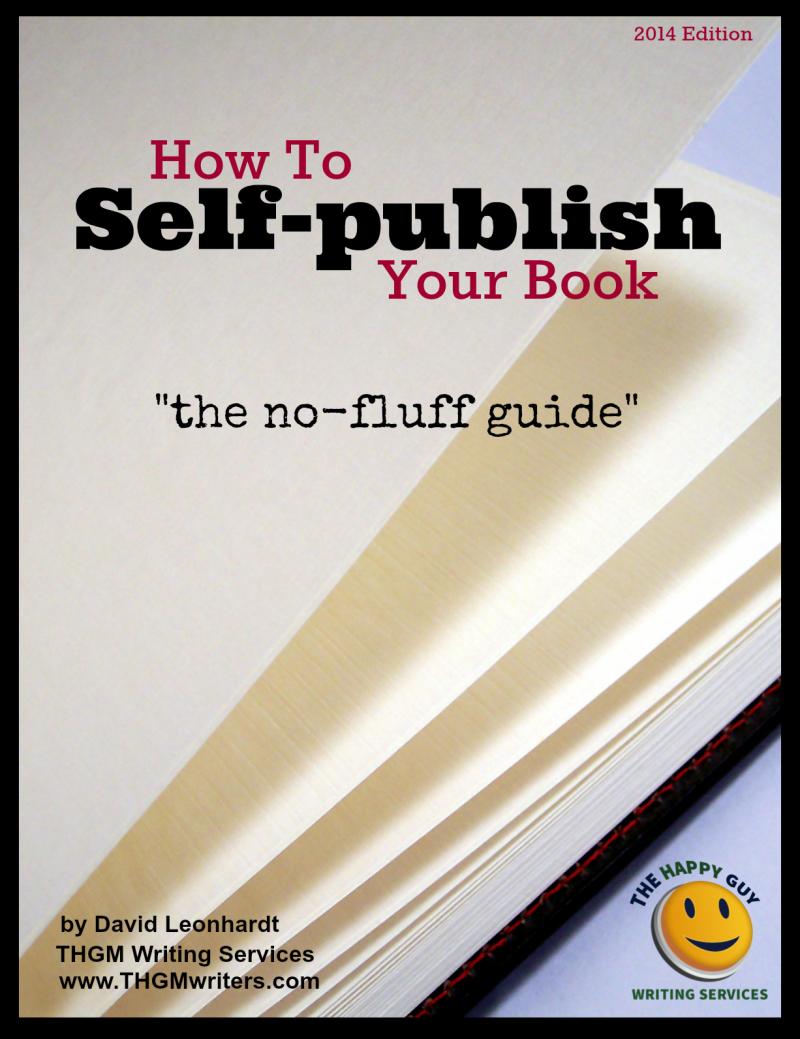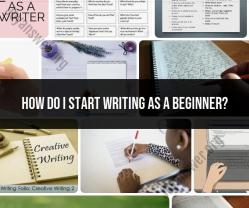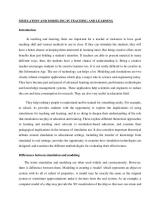How to write and self publish a book?
Writing and self-publishing a book involves several steps, from the initial idea to the final publication. Here's a step-by-step guide to help you navigate the process:
1. Define Your Book Concept:
- Choose a Genre: Determine the genre and target audience for your book.
- Craft a Unique Idea: Develop a compelling and unique concept for your book.
2. Create an Outline:
- Organize Your Thoughts: Create an outline to structure your book.
- Chapter Breakdown: Outline the main points or events for each chapter.
3. Start Writing:
- Set a Writing Schedule: Establish a consistent writing routine.
- Use Writing Tools: Choose a word processor or writing software.
- First Draft: Focus on getting your ideas down without overthinking.
4. Edit and Revise:
- Self-Editing: Review and revise your manuscript for clarity and coherence.
- Beta Readers: Get feedback from beta readers for different perspectives.
5. Professional Editing:
- Hire an Editor: Consider hiring a professional editor for a thorough review.
6. Design Your Book Cover:
- Professional Design: Invest in a professionally designed book cover.
- Visual Appeal: Ensure the cover reflects the genre and attracts your target audience.
7. Formatting Your Manuscript:
- Interior Design: Format your manuscript for print and eBook versions.
- Consider eBook Formatting Tools: Tools like Calibre can help with eBook formatting.
8. Choose a Self-Publishing Platform:
- Amazon Kindle Direct Publishing (KDP): Popular for eBooks and print-on-demand paperbacks.
- Other Platforms: Explore additional platforms like Smashwords, Draft2Digital, and IngramSpark for wider distribution.
9. Set a Book Price and Distribution:
- Pricing Strategy: Determine a competitive and reasonable price.
- Distribution Options: Decide whether to distribute exclusively with one platform or use multiple platforms.
10. Market Your Book:
- Author Website: Create an author website to showcase your work.
- Social Media: Utilize social media platforms for book promotion.
- Email Marketing: Build an email list for direct communication with readers.
11. Build Reviews and Promote:
- Seek Book Reviews: Approach book bloggers, use platforms like NetGalley, or engage with readers for reviews.
- Book Launch: Plan a launch strategy to generate initial buzz.
12. Monitor Sales and Engage with Readers:
- Track Sales: Monitor sales and adjust marketing strategies accordingly.
- Engage with Readers: Respond to reviews, engage on social media, and build a community.
13. Consider Audiobook Production (Optional):
- ACX (Audiobook Creation Exchange): Consider producing an audiobook through ACX.
14. Continue Writing:
- Plan for Sequels or New Projects: Keep writing and building your author brand.
Tips:
- Professionalism is Key: Treat your book project professionally, from writing to marketing.
- Cover Quality Matters: Invest in a high-quality book cover.
- Research Best Practices: Stay informed about industry best practices and trends.
Remember that the self-publishing landscape is dynamic, and continuous learning is crucial. Leverage online communities, forums, and resources for self-published authors to stay updated on industry changes and connect with fellow writers.
Bringing your words to life: How to write and self-publish a book?
Writing and self-publishing a book can be a rewarding experience for aspiring authors. It allows you to share your story with the world and build a dedicated audience. However, it is important to note that self-publishing is not a get-rich-quick scheme. It takes hard work, dedication, and a willingness to learn new skills.
Step-by-step guide to the writing and self-publishing process for aspiring authors
Here is a step-by-step guide to the writing and self-publishing process:
- Choose a topic and genre. What are you passionate about? What do you know a lot about? Choose a topic and genre that you are excited to write about and that you believe will resonate with readers.
- Develop your characters and plot. If you are writing a fiction book, you will need to develop your characters and plot. What are their motivations? What challenges will they face? How will they overcome those challenges?
- Write a draft of your book. Don't worry about making it perfect. Just get your thoughts down on paper (or on the computer).
- Revise and edit your book. Once you have a draft, it is time to revise and edit your book. This is where you will polish your writing, fix any errors, and make sure that your book is well-paced and engaging.
- Format your book. Once your book is revised and edited, you will need to format it for publication. This includes creating a table of contents, choosing fonts, and adding images and other elements.
- Design a book cover. Your book cover is the first thing that potential readers will see, so it is important to make a good impression. Hire a professional book cover designer or create your own using a software program such as Canva.
- Choose a self-publishing platform. There are a number of self-publishing platforms available, such as Amazon Kindle Direct Publishing (KDP), IngramSpark, and Barnes & Noble Press. Choose a platform that is right for you and your needs.
- Publish your book! Once you have chosen a self-publishing platform, you can publish your book. This process will vary depending on the platform that you choose.
Tips for marketing and promoting self-published books for maximum impact
Once your book is published, it is important to market and promote it in order to reach readers. Here are a few tips:
- Create a website or blog for your book. This is a great way to share information about your book, connect with readers, and sell your book directly.
- Use social media to promote your book. Share excerpts from your book, post behind-the-scenes photos, and run contests and giveaways.
- Reach out to book bloggers and reviewers. Ask them to read your book and write a review.
- Submit your book to book directories and listings. This will help people to find your book when they are searching for books on your topic.
- Run paid advertising campaigns. This can be a great way to reach a wider audience and boost sales.
Marketing and promoting a self-published book takes time and effort, but it is essential for success. By following the tips above, you can increase your chances of reaching readers and building a following for your books.
Additional tips:
- Offer free or discounted copies of your book to book reviewers and bloggers. This can help to generate buzz for your book and get it into the hands of readers.
- Run contests and giveaways on social media to generate excitement for your book and attract new followers.
- Partner with other authors in your genre to cross-promote each other's books.
- Attend book signings and other events to connect with readers and promote your book.
- Get involved in the online community for authors and readers. This is a great way to learn about new marketing and promotion strategies and to network with other authors.
Self-publishing can be a challenging but rewarding experience. By following the tips above, you can increase your chances of success and share your story with the world.











